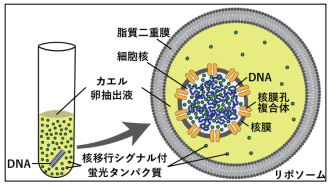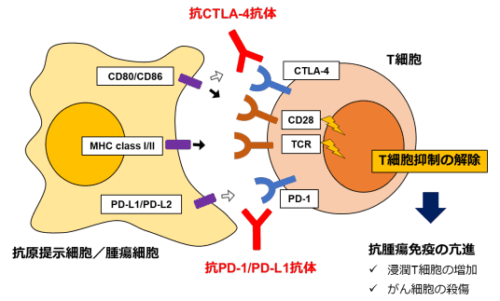2025-05-20 神奈川県立産業技術総合研究所

<関連情報>
- https://www.kistec.jp/aboutus/press/pr20250520/
- https://www.kistec.jp/kistec-manage/wp-content/uploads/press_20250520-1.pdf
- https://onlinelibrary.wiley.com/doi/10.1002/smll.202412126
Xenopus卵エキスをカプセル化した巨大ユニラメラ小胞における核集合性 Nuclear Assembly in Giant Unilamellar Vesicles Encapsulating Xenopus Egg Extract
Sho Takamori, Hisatoshi Mimura, Toshihisa Osaki, Tomo Kondo, Miyuki Shintomi, Keishi Shintomi, Miho Ohsugi, Shoji Takeuchi
Small Published: 20 May 2025
DOI:https://doi.org/10.1002/smll.202412126
Abstract
The reconstitution of a cell nucleus in a lipid bilayer-enclosed synthetic cell makes great strides in bottom-up synthetic biology. In this study, a method for assembling a nucleus in giant unilamellar vesicles (GUVs) is proposed. To induce reconstitution of the nucleus, the interphase egg extract of African clawed frogs Xenopus laevis is utilized, known as a biochemically controllable cell-free system capable of transforming an added sperm chromatin into a nucleus in vitro. The GUV formation efficiency is enhanced by the inverted emulsion method through incorporating prolonged waiting time and adding chloroform into lipid-dispersed oil, facilitating subsequent nuclear assembly reactions in the GUVs. Characterization of nucleus-like structures formed in the GUVs revealed the presence of dense DNA and accumulated GFP-NLS in the structure, indicative of functional nuclear import. Immunostaining further validated the presence of nuclear pore complexes on the surfaces of these nucleus-like structures. The approach offers a versatile platform for constructing artificial cellular systems that closely mimic eukaryotic cells.


